Exploring the Intricacies of Old English Cut Diamonds
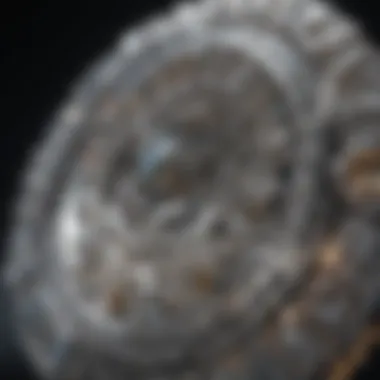
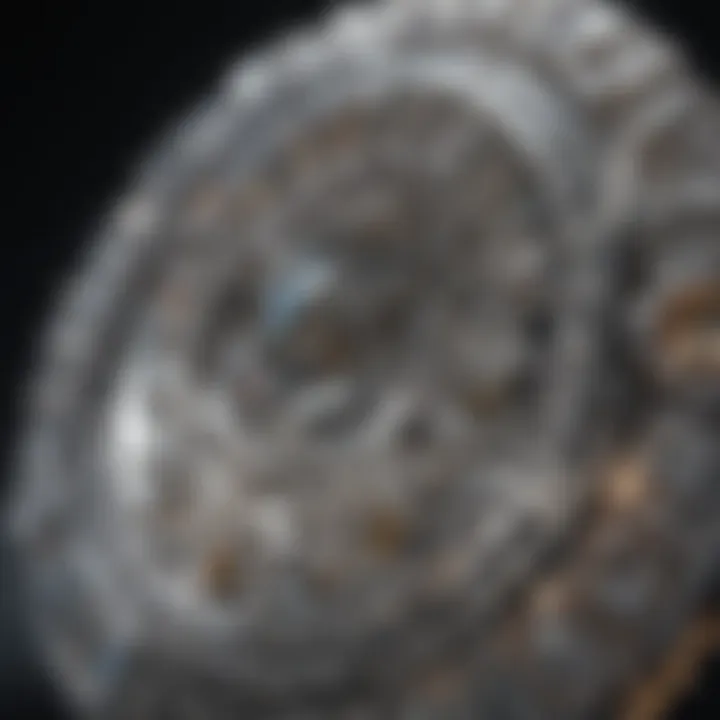
Intro
Old English cut diamonds, often shrouded in a veil of mystique, offer a window into the world of antiquity where craftsmanship and artistry flourished. Each stone tells an intricate tale, not just of its geological formation, but of the hands that shaped them, the societies that cherished them, and the unique charms they possess. As gemstone enthusiasts, collectors, and jewelry designers delve deeper into this topic, understanding the nuances of these gems becomes essential.
These diamonds represent a fusion of ancient techniques and cultural significance that beg exploration. For many, their allure is not merely in their aesthetic beauty but in their historical weight and the stories woven throughout the centuries. Understanding Old English cut diamonds involves unearthing their historical roots as well as appreciating the skill that went into creating each gem.
As we embark on this journey, we will dissect both the characteristics that define Old English cut diamonds and the historical context that surrounds them.
Gemstone Overview
Definition of Gemstones
Gemstones are naturally occurring mineral crystals, organic materials, or rocks that are prized for their beauty, rarity, and durability. Each gemstone varies in terms of composition, color, and optical properties, giving rise to a rich variety of options for collectors and designers alike. Notably, gemstones are often cut and polished into desired shapes, enhancing their natural splendor and making them suitable for jewelry.
Classification of Gemstones
Gemstones can be classified into two primary categories: precious and semi-precious. Precious gemstones, such as diamonds, rubies, sapphires, and emeralds, have historically held greater value due to their rarity and perceived desirability. In contrast, semi-precious gemstones encompass a broader range of stones such as amethyst, garnet, and topaz, which although beautiful, are more abundantly available in nature.
"The journey of a gemstone from the earth to adornment is as captivating as the gem itself."
Additionally, gemstones can also be classified based on their crystalline structure, chemical composition, and geographic origin. This classification aids enthusiasts in identifying and appreciating the unique characteristics of each stone. For example, Old English cut diamonds fall under the category of precious stones due to their rarity and exceptional qualities that have captivated collectors.
Historical Significance
Origins of Gemstone Use
Historically, the use of gemstones dates back to ancient civilizations. From the Egyptian adornments to the crowns of European monarchs, gems have played significant roles in both personal decoration and spiritual symbolism. The diamonds we know today, however, have journeyed through a myriad of cultural paradigms to reach their modern status as coveted treasures.
Old English cut diamonds specifically gained prominence during the 18th and 19th centuries when meticulous cutting techniques emerged, reflecting the craftsmanship and aesthetic sensibilities of the time.
Cultural Insights: Gemstones in Ancient Civilizations
Throughout various cultures, gemstones have been imbued with meanings that often transcend their physical beauty. For instance, in ancient Egypt, lapis lazuli was believed to facilitate spiritual connection, while in India, diamonds symbolized wealth and power.
Old English cut diamonds have roots intertwined with such historical narratives, often being part of royal collections and significant artifacts. Their presence in royal regalia speaks volumes about their inherent value and the cultural heritage from which they stemmed.
In summary, the exploration of Old English cut diamonds reveals a tapestry woven with history, artistry, and cultural significance, making it crucial for gemstone enthusiasts to delve deeper into these facets.
Prolusion to Old English Cut Diamonds
Old English cut diamonds are an intriguing segment of gemstone history that holds significant appeal for both collectors and enthusiasts alike. These gems showcase a striking blend of historical craftsmanship and aesthetic beauty, making them a fascinating topic not just for jewelry aficionados, but also for anyone interested in the rich tapestry of diamond cutting evolution.
Understanding Old English cut diamonds is essential because it provides insights into how diamonds were shaped and appreciated in past centuries, particularly before modern cutting techniques materialized. These unique cuts, characterized by their subtle brilliance and distinctive shapes, reflect the artistry and skill of diamond cutters from an era that prized manual work over machine precision.
Through this exploration, the article aims to shed light on the importance of Old English cuts in the broader context of diamond history. Readers will come away with knowledge of not only what defines these gems but the cultural significance they hold.
Defining Old English Cut
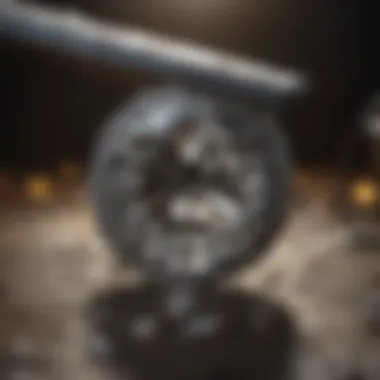
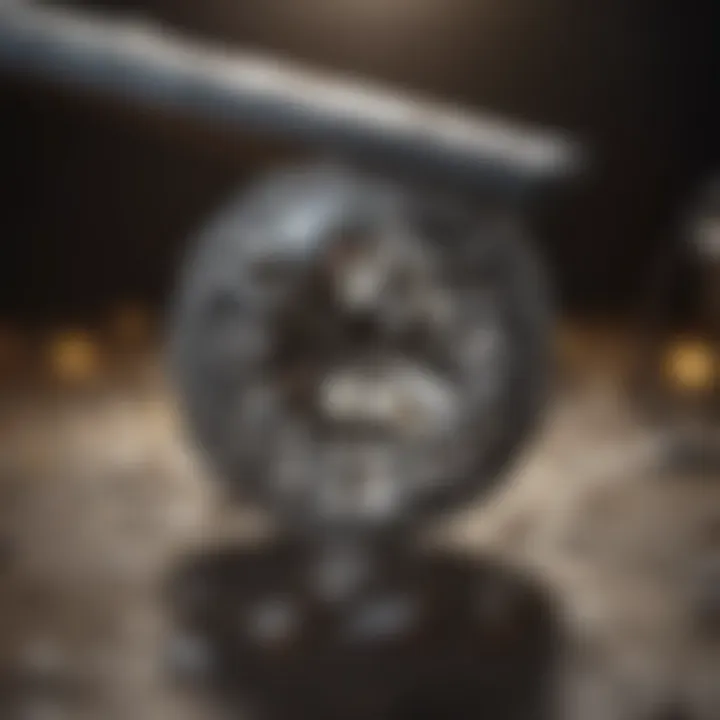
To grasp the allure of Old English cut diamonds, it's crucial to define what distinguishes them from other diamond cuts. The Old English cut is characterized by its specific geometry, featuring a rounded silhouette and relatively fewer facets than modern cuts. Typically, these diamonds have a large table and a shallow crown, which produces a softer reflection of light.
This cut was often utilized during the late 19th century when diamond cutting was an artisanal craft. Jewelers would focus on maximizing the diamond's inherent beauty by enhancing its brightness and clarity while ensuring that craftsmanship was of utmost importance. Simply put, an Old English cut diamond often tells stories of time and skill, encapsulating the essence of the era in which it was created.
Historical Background
The history of Old English cut diamonds is as rich as the stones themselves. The style became popular during the Georgian and Victorian periods, roughly spanning the 1700s to the early 1900s. It emerged in a time when diamonds were largely seen as symbols of wealth and status. The techniques involved in creating these diamonds were personal, requiring years of experience and a keen eye for aesthetics.
Originally, diamond cutting was done by hand, utilizing rudimentary tools and techniques. As techniques evolved, so did the artistry associated with cutting. The Old English cut represents a marriage of craft and design that was heavily influenced by the social and economic factors of the time. The process often involved the meticulous removal of material from the rough diamond, with the cutter relying on intuition and a deep understanding of the gemstone's properties. Each stone could take hours, if not days, to perfect, and as a result, no two diamonds were identical.
In essence, Old English cut diamonds not only reflect individual craftsmanship but also the changing attitudes towards luxury and adornment throughout history. They encapsulate an era when diamonds were coveted not just for their sparkle but for their artistry, cultural context, and the notable stories they could tell.
The Craftsmanship Behind Old English Cut Diamonds
The art of crafting Old English cut diamonds commands attention not only for its intricate techniques but also for the passion and dedication woven into each stone. Understanding the craftsmanship behind these diamonds sheds light on their lasting allure in the jewelry world, revealing a narrative where skill meets history. For gemstone enthusiasts, collectors, and jewelry designers alike, appreciating the craftsmanship allows for a deeper connection to the artifacts that once adorned the nobility and wealthy patrons in centuries gone by.
Cutting Techniques
The cutting techniques of Old English cut diamonds differ significantly from the modern methods. While today’s diamonds tend to feature brilliant cuts designed to maximize sparkle, the Old English cut places greater emphasis on a balance between form and functionality. Here, we delve into the nuances:
- Table and Pavilion Shapes: The diameter of the table and the angularity of the pavilion remain pivotal. Os such cuts often boast a larger table and deeper pavilion, creating a unique balance between brilliance and depth.
- Corner Cuts: Unlike many modern styles, the corners of an Old English cut diamond are less pronounced and smoother, which can soften the overall silhouette of the stone.
- Facet Count: Typically featuring around 24 to 32 facets, these diamonds often present a more muted sparkle than their contemporary counterparts, favoring elegance over sheer brilliance. This old-school approach shifts one's focus to the diamond's beauty and the light play that emerges not through reflection, but in a subtle scintillation.
Tools and Materials Used
Crafting these old diamonds was no walking in the park. The tools and materials used during the cutting process speak volumes about the technical capabilities of the era.
- Lapidary Wheels: Crafting tools were relatively rudimentary yet effective. Lapidary wheels made of cast iron served as the foundational tools, operating with precision.
- Diamond Dust: Of course, diamond dust was used to sharpen other stones or tools, allowing for greater accuracy in creating the facets. This dust, a byproduct of earlier cuts, transformed into a tool of creation, emphasizing the closed-loop of recycling and craftsmanship.
- Hand tools: Many artisans relied on hand-powered tools like hammers and chisels to create the intricacies in the cut, allowing for a personal touch that is often lost in automated processes of today. Each cut, each facet was a labor of love, meticulously shaped to uphold the gem's natural charm.
Through these careful techniques and tools, the Old English cut diamonds tell a story infused with artisanal mastery that mirrors the craftsmanship of the past. As we engage with these gems, it becomes clear that understanding such intricacies provides a window not only into their distinctive beauty but also into the cultural context and human narratives they embody.
"True craftsmanship is not just about making an object; it's about understanding the deeper value of the process, connecting to the hands that shaped it, and knowing the heart that it will captivate."
As we dissect the nuances of craftsmanship, it clarifies why Old English cut diamonds hold an esteemed position in both historical significance and modern appreciation.
Unique Characteristics of Old English Cut Diamonds
When diving into the subject of Old English cut diamonds, their unique characteristics stand out not just in their appearance, but in the stories they tell. Each diamond carries a legacy influenced by its time and the craftsmanship behind its creation. Understanding these characteristics is crucial for gemstone enthusiasts and collectors as they add layers of appreciation to these antique gems.
Visual Aesthetic
The visual appeal of Old English cut diamonds is nothing short of captivating. These diamonds are typically recognized for their cushion-like shape with rounded corners and a smaller table compared to more modern cuts. What primarily draws the eye is the "fancy" nature in their cuts; they possess a romantic quality that many contemporary diamonds lack.
The old world charm is often manifested in their subtle brilliance. Old English cuts prioritize a softer sparkle rather than an overwhelming flash, creating a display that can be described as sophisticated rather than garish. This might remind one of a gentle sunlight filtering through leaves, rather than a striking spotlight at a concert.
Aesthetically, colors tend to appear deeper in these cuts, often creating a more lively interaction with light. Collectors appreciate that these diamonds do not merely reflect; they have a way of playing with light that adds life to the stone itself. For those yearning for individuality in their jewelry, an Old English cut diamond can be like a breath of fresh air.
Light Reflection and Scintillation
Light plays a pivotal role in the allure of diamonds, and Old English cuts exhibit a distinct method of light reflection. The faceting style allows for a unique scattering of light, creating what is known as scintillation, which is more subdued yet enchanting compared to modern styles. Whereas other cuts might dazzle with a blinding shine, Old English cuts provide a charming dance of light – more akin to flickering candlelight in an intimate setting.
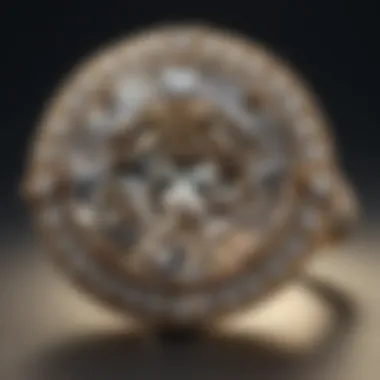
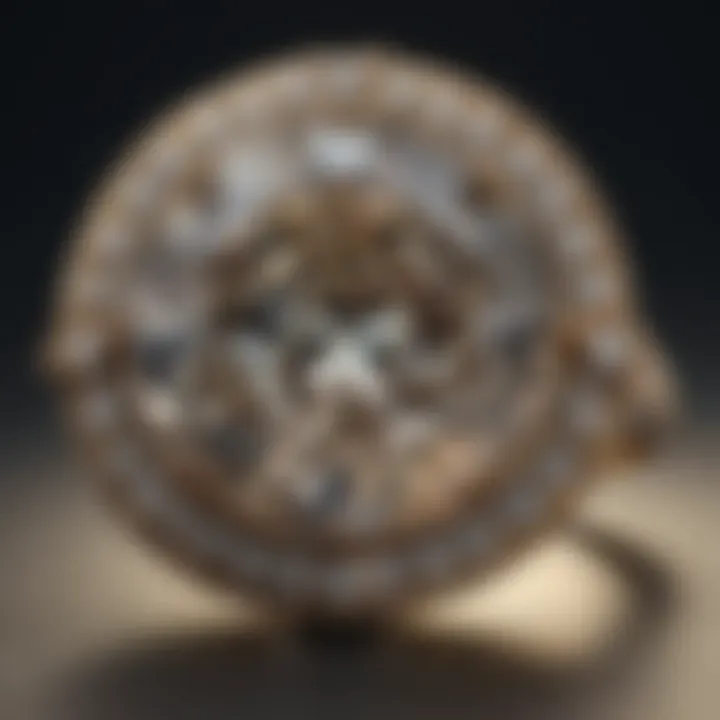
The arrangement of facets also contributes to this characteristic. The mix of larger and smaller facets creates a brilliant interplay with both light and shadow, enhancing the diamond's inherent beauty without screaming for attention. It’s like a subtle whisper rather than a shouting match in a crowded room. Each moment in the presence of these stones can reveal something new, making them endlessly fascinating.
"In the subdued sparkle of Old English cut diamonds, one finds that quiet elegance often speaks louder than bold displays."
Accessibility of Color and Clarity
Another noteworthy aspect of Old English cut diamonds is their level of accessibility regarding color and clarity. The nature of older cuts allows for easier concealment of minor inclusions and color variations; hence, many of these stones are found with a pleasing depth of color, making them appealing even if they are not graded as perfect by modern standards. This is vital for collectors who appreciate character and history in their diamonds.
The clarity grading can sometimes be a bit misleading for those unfamiliar with the history behind these stones. Unlike contemporary diamonds which are virtually flawless with absolute clarity, Old English cuts might feature slight inclusions or tint that tell a story of their origin. This makes them not only unique but also more relatable as they symbolize the imperfections that come with age and history.
Historical Significance of Old English Cut Diamonds
Old English cut diamonds hold a unique place in the annals of jewelry history, entwined with cultural, political, and social dynamics of the time. These diamonds are more than just ornamental pieces; they are artifacts that chronicle human craftsmanship and historical events. The importance of Old English cut diamonds can be explored through their cultural context and significant examples throughout history.
Cultural Context
In the 16th and 17th centuries, when Old English cut diamonds rose to prominence, diamonds were not merely decorative elements but symbols of power and wealth. Rulers and nobility often adorned themselves with these gems, reflecting not just status but also the intricate artistry involved in their creation. The demand for unique and beautifully cut stones spurred advancements in diamond cutting techniques and influenced trade routes, which connected Europe with sources of diamonds from India and beyond.
The cut itself, characterized by a less geometric design than modern cuts, allowed for a broader range of light reflection, producing an enchanting shimmer. As a result, they became a favored choice among aristocrats, who believed that possessing a unique diamond could convey their individual taste and societal supremacy.
These diamonds were often used in pieces that told stories of lineage and heritage, making them cultural artifacts that go beyond their visual appeal. They are a testament to the values and artistry of the time, saying much about how society viewed beauty, status, and craftsmanship.
Notable Examples Throughout History
Throughout history, several notable Old English cut diamonds have made their mark on the world, each with its compelling narrative:
- The Imperial State Crown: The diamond situated atop this crown, known as the Cullinan II, was originally part of the Cullinan diamond mined in South Africa. Set in the crown as an Old English cut, it symbolizes the unity of the British Empire and is a stunning example of the regal use of such diamonds.
- The Surat Diamonds: Originating from India and traded extensively during the colonial period, these diamonds saw various cuts and were an integral part of jewelry brought back to Europe, showcasing the rich heritage of craftsmanship from the East.
- The Koh-i-Noor Diamond: Another gem steeped in history, the Koh-i-Noor’s journey through various dynasties in India to its current place in the British Crown Jewels embodies the political significance attached to diamonds of this era.
"Old English cut diamonds are not just beautiful stones; they are historical narratives, reflecting the politics and culture of their times."
The historical tales embedded in these diamonds enhance their beauty, turning them into conversation pieces that carry more than just aesthetic allure. They tell stories of wars, conquests, and trades, casting a fascinating shadow on the world we live in. For gemstone enthusiasts and collectors alike, understanding these historical elements adds layers of appreciation to their value and significance.
In summary, the historical significance of Old English cut diamonds lies not only in their craftsmanship but also in their role as cultural symbols, shaping and reflecting societal attitudes across generations.
Modern Perspectives on Old English Cut Diamonds
Old English cut diamonds, despite their antiquity, continue to captivate modern audiences. Understanding current trends in antique jewelry, along with the collectibility and investment potential of these gems, unveils a fascinating intersection of history and contemporary taste. With an informed perspective, enthusiasts can appreciate how these distinctive diamonds fit into the broader context of today’s jewelry market.
Current Trends in Antique Jewelry
The allure of Old English cut diamonds can be seen flourishing within current antique jewelry trends. As nostalgia for the past grows, there’s an increasing demand for pieces that tell a story. Collectors and enthusiasts are leaning toward unique items with historical significance, moving away from mass-produced modern designs.
Key points regarding the current trends include:
- Personalized Pieces: Antique jewelry, particularly those featuring Old English cuts, offers a more personalized touch. Each diamond comes with its own history and unique character, which is appealing to individuals who seek more than just aesthetic value.
- Sustainable Choices: As awareness of sustainability grows, many are gravitating towards vintage and antique options as environmentally conscious alternatives. Old English cut diamonds, being a product of methods long predating today’s industrial practices, resonate with this ethos.
- Fusion of Styles: Designers are creatively incorporating old cuts into modern pieces, marrying classical craftsmanship with contemporary design principles. This fusion garners appreciation from a broader audience while honoring the artistry of the past.
Collectibility and Investment Potential
The market for Old English cut diamonds reflects a robust potential for both collectors and investors. As more people recognize these diamonds' rarity and unique aesthetic qualities, their desirability escalates.
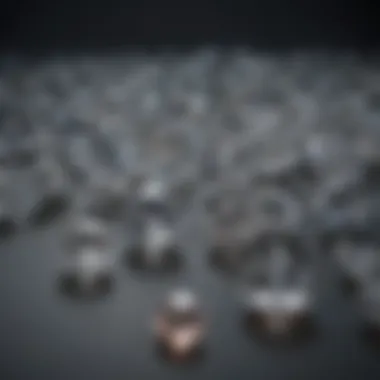
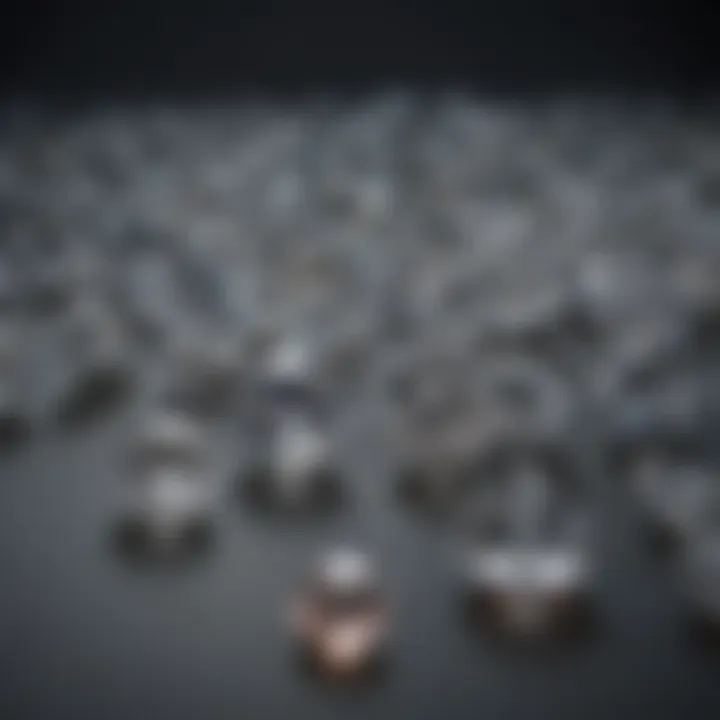
Considerations for potential collectors include:
- Rarity: Old English cut diamonds were popular predominantly from the 19th century. With the passage of time, many exquisite examples have been lost or converted into new settings, thus heightening the remaining diamonds' value and rarity.
- Market Fluctuations: Investors find that the collector's market for antique jewelry, including those with Old English cuts, often sustains its value over time, differing from more transient modern trends. As more collectors enter the market, this sector grows more resilient.
- Future Appreciation: Experts suggest that with the ongoing interest in vintage aesthetics, the value of high-quality Old English cut diamonds is likely to appreciate. Collectors who invest in well-maintained pieces may see considerable returns.
"Old English cut diamonds are not merely gems; they represent history, artistry, and a unique aesthetic that is increasingly sought after in today's market."
In summary, the modern perspective on Old English cut diamonds illustrates a blend of historical appreciation and contemporary relevance. With trends leaning toward personalized, sustainable, and unique antiques, these diamonds remain at the forefront of both collectible and investment conversations.
Caring for Old English Cut Diamonds
Caring for Old English cut diamonds is not just an exercise in maintenance; it encapsulates savoring the artistry and history inherent in these exquisite stones. From how to clean these diamonds properly to their ideal storage conditions, each element plays a crucial role in preserving their beauty and value. Ensuring suitable care not only prolongs the life of the diamond but also enhances its brilliance and charm. Understanding the nuances of caring for these time-honored gems is indispensable for collectors and enthusiasts alike, given their unique cut and historical significance.
Cleaning Techniques
When it comes to cleaning Old English cut diamonds, one has to tread lightly. The delicate facets, designed to catch light in a mesmerizing dance, require specific methods to avoid any possible damage. Here are some effective yet gentle cleaning techniques:
- Warm Soapy Water: Begin with simple warm water mixed with a few drops of mild dish soap. Soak the diamond for about 20 minutes. After soaking, use a soft-bristle toothbrush to gently scrub, especially around the base where dirt can accumulate.
- Ammonia Solution: For a deeper clean, a solution of one part ammonia to six parts water can be used. This method is particularly effective for stubborn grime. However, rinse thoroughly after cleaning to prevent any residue.
- Professional Cleaning: For those concerned about damaging their precious gem, consulting a professional jeweler is advisable. They possess the requisite expertise and tools to ensure that your diamond emerges unscathed and sparkling.
"An Old English cut diamond is like a story embedded in the stone, and it deserves the gentlest of care to keep its tale alive."
Storage Recommendations
Proper storage is pivotal in maintaining the allure of Old English cut diamonds. It is essential to protect these gems from unnecessary wear and tear. Below are some tried-and-true recommendations for storing these exquisite pieces safely:
- Soft Cloth Pouches: Store each diamond separately in soft cloth pouches. This prevents scratches caused by contact with other jewelry.
- Jewelry Box with Soft Lining: A lined jewelry box can provide additional cushioning. Opt for one that has padding or soft dividers to keep the diamonds from jostling against each other.
- Away from Light: While Old English cut diamonds thrive on light, storing them away from direct sunlight helps in maintaining their color.
End: The Enduring Allure of Old English Cut Diamonds
Old English cut diamonds undoubtedly hold a special place within the realm of antique jewelry. Their significance goes beyond mere aesthetics; they reflect a historical artistry that resonates with both collectors and admirers today. This enduring allure can be attributed to several key aspects that make these diamonds stand out amidst a sea of modern gems.
The craftsmanship involved in creating these diamonds is particularly notable. Every Old English cut diamond is a testament to the skill and dedication of artisans from a bygone era. Their careful attention to detail ensures that each piece inherently carries a story. This aspect elevates the value of these diamonds, not just in terms of price, but in their cultural and historical importance.
In addition to craftsmanship, the unique characteristics of these diamonds contribute to their charm. From the way they reflect light to their warm hues, Old English cut diamonds provide a tactile and visual experience unmatched by contemporary alternatives. Their imperfections, often viewed as flaws in modern gems, serve instead to enhance the character and narrative behind each stone. This perception shifts the focus from perfection to individuality, creating a deeper connection for the beholder.
Moreover, as gemstone enthusiasts increasingly seek authenticity and uniqueness in their collections, Old English cut diamonds offer a robust answer. The current trend favors the allure of history, with buyers leaning toward pieces that are not just gems, but artifacts that encapsulate a slice of time. Combining this with the need for investment pieces presents an opportunity—one where Old English cut diamonds can excel, merging love for art with financial prudence.
Importantly, as appreciation for antique jewelry grows, so does the need for proper care. Understanding how to maintain these diamonds not only preserves their physical integrity but also honors their legacy. This leads to an appreciation grounded in respect for history and sustainability.
"Old English cut diamonds are not just beautiful; they are conversation starters that weave the past into the present."
In summary, the allure of Old English cut diamonds stems from their craftsmanship, unique characteristics, historical significance, and proper care practices. Collectors now and in the years to come will continue to find fascination in these timeless gems, blending history, beauty, and investment opportunities in a way that few materials can achieve.
Summary of Key Points
- Craftsmanship: Highlights the unique artisan skills that define each diamond.
- Historical Significance: Each piece carries a story of its time, adding depth to its allure.
- Unique Characteristics: The aesthetic differences from modern cuts make these diamonds sought after.
- Current Trends: The increasing demand for authenticity and age in jewelry.
- Care Practices: Understanding how to maintain these antiques ensures their legacy.
Looking Toward the Future
The future of Old English cut diamonds looks promising as we notice a slow shift in jewelry preferences. Anticipating continued interest in the historical and artisan aspects of jewelry design signifies a bright outlook for these diamonds.
With collectors becoming more discerning, the focus will be not only on the stone but also on its provenance and story. The narrative attached to Old English cut diamonds enhances their desirability.
The rise of online platforms allows enthusiasts to connect globally, fostering a community that appreciates antique gemstones. There may be an increasing market for ethical antique diamonds, where buyers seek gems with historical significance rather than mass-produced pieces. This trend could potentially elevate the status of Old English cut diamonds even further.
In closing, the enduring allure of Old English cut diamonds serves as a bridge between eras—where artistry meets investment, and history intertwines with modernity. As appreciation for these gems continues to grow, they are likely to remain celebrated icons in the world of jewelry.



